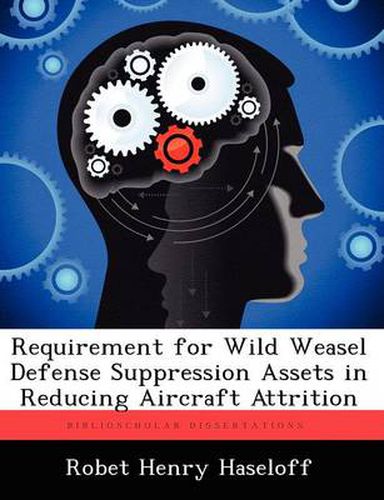Readings Newsletter
Become a Readings Member to make your shopping experience even easier.
Sign in or sign up for free!
You’re not far away from qualifying for FREE standard shipping within Australia
You’ve qualified for FREE standard shipping within Australia
The cart is loading…






This title is printed to order. This book may have been self-published. If so, we cannot guarantee the quality of the content. In the main most books will have gone through the editing process however some may not. We therefore suggest that you be aware of this before ordering this book. If in doubt check either the author or publisher’s details as we are unable to accept any returns unless they are faulty. Please contact us if you have any questions.
The combat effectiveness of tactical airpower can be assured during a conflict only if attrition is maintained at minimum levels. In today’s high threat environment, the Warsaw Pact nations outnumber the NATO allies in front line aircraft by a factor of 2.4 to 1 and have over 1800 surface-to-air missile launchers and 1500 search radar systems. Therefore, we must have an effective and efficient defense suppression capability to effectively accomplish the counterair mission. Effective suppression of enemy radar systems is directly associated with attrition rates of fighter aircraft operating in the vicinity of the forward edge of the battle area (FEBA). The focus of this thesis is to determine if Wild Weasel assets are required during a conflict and ascertain when they become cost effective in reducing attrition of strike aircraft. This study examines three aspects of the suppression of enemy air defense (SEAD) mission. First is the history of electronic combat. This thesis covers the history of aerial electronic combat beginning with the introduction of radar controlled antiaircraft gun and missile systems after World War II. Other areas discussed include the development of the first Wild Weasel aircraft during the Vietnam conflict and the lessons learned from the 1973 Arab-Israeli War. Recent hostilities include the Falklands conflict, the Bekka Valley debacle, and the 1986 raid on Libya by U.S. forces. The second aspect covers the Soviet radar threat. Presentation of the Soviet threat discusses doctrine, employment of the Soviet air defense system, the capabilities and weaknesses of each Soviet radar system, and concludes with an insight to future Soviet weapons systems. The final portion of the thesis provides an analysis of fighter attrition and a cost effectiveness analysis to determine when the Wild Weasel force reaches a cost effective break even point.
$9.00 standard shipping within Australia
FREE standard shipping within Australia for orders over $100.00
Express & International shipping calculated at checkout
This title is printed to order. This book may have been self-published. If so, we cannot guarantee the quality of the content. In the main most books will have gone through the editing process however some may not. We therefore suggest that you be aware of this before ordering this book. If in doubt check either the author or publisher’s details as we are unable to accept any returns unless they are faulty. Please contact us if you have any questions.
The combat effectiveness of tactical airpower can be assured during a conflict only if attrition is maintained at minimum levels. In today’s high threat environment, the Warsaw Pact nations outnumber the NATO allies in front line aircraft by a factor of 2.4 to 1 and have over 1800 surface-to-air missile launchers and 1500 search radar systems. Therefore, we must have an effective and efficient defense suppression capability to effectively accomplish the counterair mission. Effective suppression of enemy radar systems is directly associated with attrition rates of fighter aircraft operating in the vicinity of the forward edge of the battle area (FEBA). The focus of this thesis is to determine if Wild Weasel assets are required during a conflict and ascertain when they become cost effective in reducing attrition of strike aircraft. This study examines three aspects of the suppression of enemy air defense (SEAD) mission. First is the history of electronic combat. This thesis covers the history of aerial electronic combat beginning with the introduction of radar controlled antiaircraft gun and missile systems after World War II. Other areas discussed include the development of the first Wild Weasel aircraft during the Vietnam conflict and the lessons learned from the 1973 Arab-Israeli War. Recent hostilities include the Falklands conflict, the Bekka Valley debacle, and the 1986 raid on Libya by U.S. forces. The second aspect covers the Soviet radar threat. Presentation of the Soviet threat discusses doctrine, employment of the Soviet air defense system, the capabilities and weaknesses of each Soviet radar system, and concludes with an insight to future Soviet weapons systems. The final portion of the thesis provides an analysis of fighter attrition and a cost effectiveness analysis to determine when the Wild Weasel force reaches a cost effective break even point.